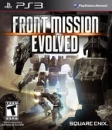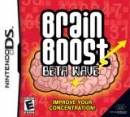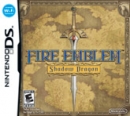superchunk said:
That's just the cpu, when you also factor in the better gpu and memory, gcn is still more powerful. |
not quite because the ps2 like the ps3 used the gpu in conjunction with the CPU to do graphic's there is more in common with the PS2 and the ps3 than many people realize in how they are designed.
still not quite:
128-bit Emotion Engine CPU
- 300MHz
- 6.2 billion floating-point operations per second
- 2 x Vector Processing Units (Floating Point Multiply Accumulator x 9, Floating Point Divider x 1)
- 3.2 GBytes/second bus bandwidth
- 1.8 Watt power consumption maximum
The 128 bit emotion engine is the brains behind the Playstation 2. Much of the early games poor performance can be put down to the fact that no games yet are using the 2 Vector Processing units which speed up calculations considerably.
Graphics Synthesizer
- 150Mhz
- 48 GBytes/second DRAM BUS bandwidth
- 2560 bits bus bandwidth
- 75 million polygons per second peak rendering rate
- 16.7 million colours
- Perspective-Correct Texture Mapping
- Point, Bilinear, Trilinear and Anisotropic Mip-Mapping
- Gourard Shading
- Z-Buffering
- Hardware Based Fogging
- Bump Mapping
- Coloured Light Sourcing
- Lighting and Shadow Volumes
- Hardware Based Texture Compression
One of the biggest drawback of this powerful graphics chip is a total lack of anti-ailising which has caused early games to have a jagged look to them. There are other tricks that can be used to avoid this situation but it will take developers time to get it all right.
System RAM
- Main RAM : 32MB RAMBUS
- Video RAM : 4MB
- DVD Cache : TBA
The Playstation 2 includes 32MB RAMBUS RAM. In effect this unified RAM allows developers to determine where the RAM is best utilised. If there is more sound requirements then more RAM can be dedicated to handling the RAM. One major drawback of the Playstation 2 is the limited amount of VRAM which limits the amount of textures the system can have. In fact the Dreamcast games have an edge in this area due to the 8MB VRAM on that system.
now Nintendo's Game cube:
| Processor: | 128-bit IBM Gekko |
| CPU Speed: | 485 MHz |
| Players: | 4 per System |
| System Memory: | 40MB |
| Main Memory: | 24MB 1T S RAM |
| A- Memory: | 16MB DRAM |
| Sound: | 16bit DSP, 2MB RAM |
| Sound Support: | Dolby, DTS, AC3 |
Video Memory: 4MB Visual RAM
| Display Capability: |
|
|
||||||||||||||||||||||||||||||||||||||||||||||||||||||||||||||||||
|
||||||||||||||||||||||||||||||||||||||||||||||||||||||||||||||||||
|
| System LSI: | "Flipper" (Custom ATI/Nintendo) |
| Manufacture Process: | 0.18 microns NEC Embedded DRAM Process |
| Clock Frequency: | 162MHz |
| Floating Point Ability: | 13.0 GFLOPS (Peak) (MPU, Geometry Engine, HW Lighting Total) |
| Frame Buffer: | Approx. 2MB, Sustainable Latency: 6.2ns (1T-SRAM) |
| Texture Cache: | Approx. 1MB Sustainable Latency : 6.2ns (1T-SRAM) |
| Texture Read Band.: | 10.4GB/second (Peak) |
| Main Mem. Bandwidth: | 2.6GB/second (Peak) |
| Color, Z-Buffer: | Each is 24bits |
Image Proc. Function: |
|
as you can see it's not quite as easy to say one is more powerful than the other since the only area that the game cube has is in the cpu but is hindered by the speed of it's bus.

I AM BOLO
100% lover "nothing else matter's" after that...
ps:
Proud psOne/2/3/p owner. I survived Aplcalyps3 and all I got was this lousy Signature.



















